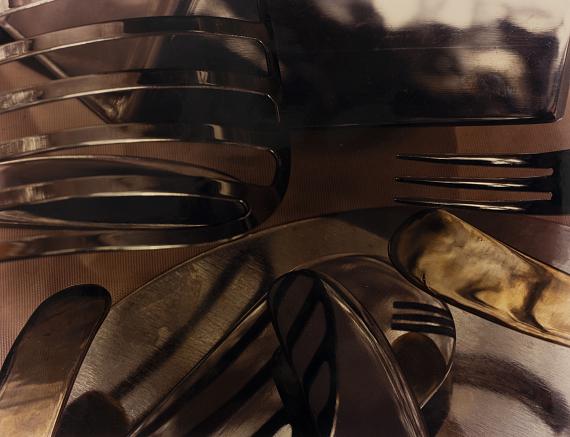
Untitled, 1978
Kitchen Still Lifes 70.1
Vintage chromogenic colour print
16 x 20 in. / 40 x 50 cm sheet
Signed, editioned and dated by the artist on recto
Provenance: Jan Groover estate
Ed. 2/3
Early Color
Jo Ann Callis » Jan Groover »
Exhibition:
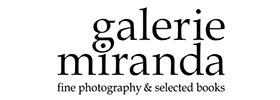
Galerie Miranda
21 rue du Château d’Eau
75010 Paris
+33(0)1-40 38 36 53
enquiries@galeriemiranda.com
www.galeriemiranda.com
Tue-Sat 12-19
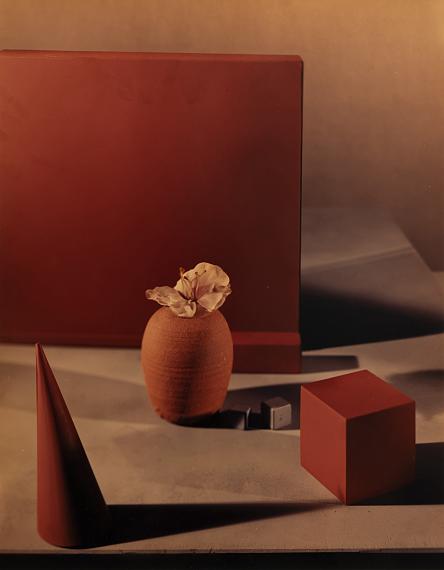
Untitled, 1987
181.2
Vintage chromogenic colour print
16 x 20 in. / 40 x 50 cm sheet
Signed, editioned and dated by the artist on recto
Provenance: Jan Groover estate
Ed. 3/5
Jan Groover
"Early color"
with works by Jo Ann Callis
Exhibition: 1 September - 13 November 2022
During Paris Photo week, Galerie Miranda will be presenting selected works by Jan Groover (b.1943-
d.2012), whose retrospective exhibition opens at the Fondation Henri Cartier-Bresson on 8 November
2022. Groover's works are presented at Galerie Miranda in a two-person exhibition with Jo Ann Callis (b. 1940) and featuring selected vintage prints by Groover, notably from her famous series "Kitchen Still Lifes" (1979), alongside contemporary prints from the series "Early Color" (1976) by Callis.
In New York in the mid 70s, Jan Groover created "Kitchen Still Lifes" series from a kitchen sink piled up
with fork tines, butter knife blades, scalloped cake tins and indoor plants. In 1979 an image from this
series graced the cover of ArtForum magazine: according to critic Andy Grundberg, it announced that
“photography had arrived in the artworld - complete with a marketplace to support it." At the same time
on the west coast, in Los Angeles, Jo Ann Callis was producing her seminal series "Early Color", influenced
notably by Paul Outerbridge but also Hans Bellmer and Pierre Molinier. Creating cinematographic scenes
with household props, Callis sought to capture the tensions and anxiety of a claustrophobic domestic
environment where freedom, pleasure and curiosity are bridled.
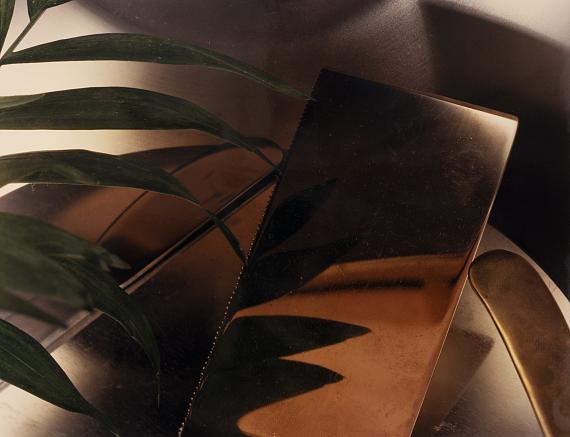
Untitled, 1979
Kitchen Still Lifes 073.3
Vintage chromogenic colour print
16 x 20 in. / 40 x 50 cm sheet
Signed, editioned and dated by the artist on recto
Provenance: Jan Groover estate
Ed. 2/3
Until then, color photography was still largely considered a commercial form, particularly suited to
advertising and fashion. Walker Evans had famously declared that "color photography is vulgar" (1961)
and Robert Frank that "black and white are the colors of photography" (1969). By the 1970s, and with the
commercialization of color photographic film, interest in and debate around the role of color photography
in the art world was becoming harder to ignore. The major historical marker is generally considered to be
the MoMA exhibition in 1976, of dye transfer color photographs by William Eggleston (b. 1939), curated
by John Szarkowski. Eggleston’s diaristic, 'snapshot' style was notoriously reviewed in the NY Times as "the most hated show of the year" yet it heralded institutional acceptance of color photography as both a process and a language.
At that time of Eggleston’s 1976 exhibition, both Groover and Callis had already explored a broad range
of forms and languages: Jan Groover had worked as an abstract painter until her 30s; Callis also painted
and introduced other elements into her compositions, such as screen printing, clay sculpture and textiles;
they both explored black & white photography and used Polaroids throughout their careers. Whilst taking
different formal paths, Callis’ and Groover’s works share several features: both cite for example Italian
painter Giorgio Morandi (1890-1964) and the calm hues of his 'flat' still lives, as a central influence; they both prepared their 'fabricated' compositions in minute detail before taking the final photograph and, in his preface to the 1992 Jan Groover monograph, John Szarkowski writes that her training as a painter
"disposed her to think of a picture as something that was made, not discovered." Similarly, Judith Keller,
Senior Photography Curator at the J. Paul Getty Museum, quotes Callis: "The photograph is highly
structured, so you don’t think it is a real home or a real room, but a room made to evoke something. It's
a room in your mind." (preface to the 2009 publication 'Jo Ann Callis: Woman Twirling').
Works by Jo Ann Callis are presented by Galerie Miranda in friendly collaboration with ROSEGALLERY, Santa Monica
Works by Jan Groover are presented by Galerie Miranda in friendly collaboration with Janet Borden Gallery, Brooklyn, with thanks to the Jan Groover Estate.
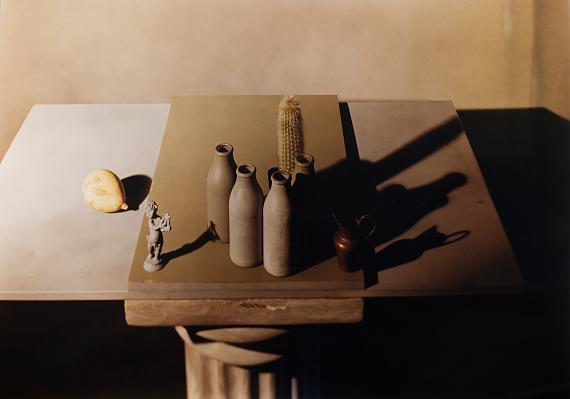
Untitled, 1987
FS 38.1
Vintage chromogenic colour print
20 x 24 in. / 50 x 60 cm sheet
Signed, editioned and dated by the artist on recto
Provenance: Jan Groover estate
Ed. 1/5
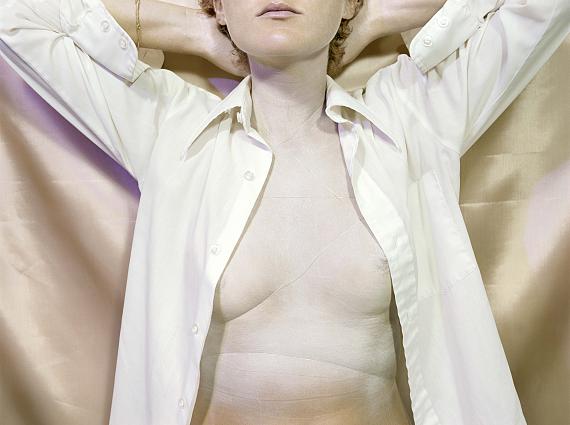
Untitled from Early Color Portfolio c. 1976
Archival pigment print
25 x 30,5 cm image / 40 x 50 cm sheet / 44 X 52 cm framed
Signed and dated by the artist in pencil on verso
Printed under direct supervision of the artist
From the collection of the artist
Ed. 1 / 10 + 2AP